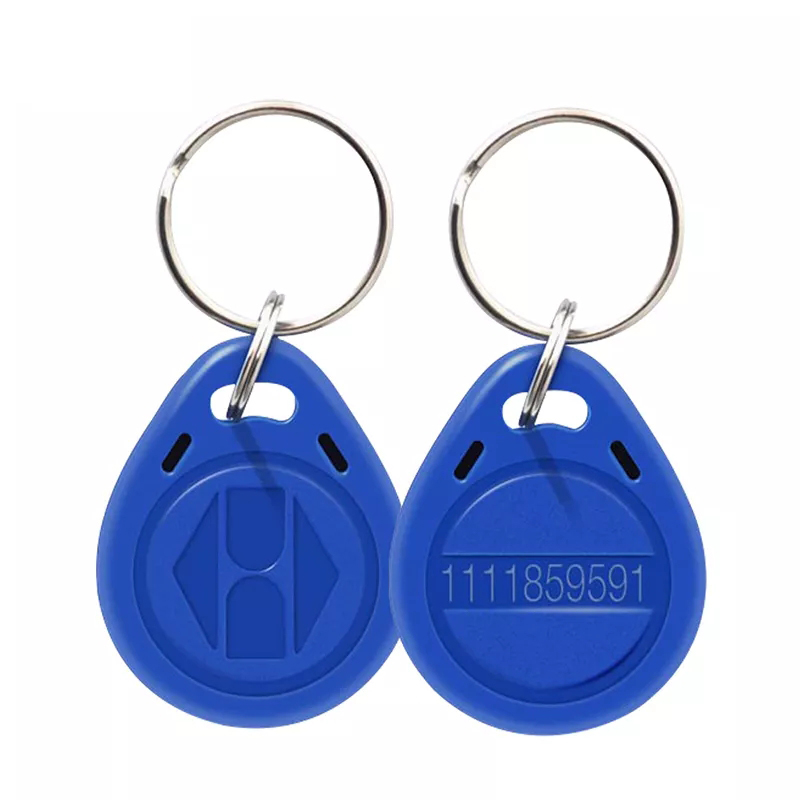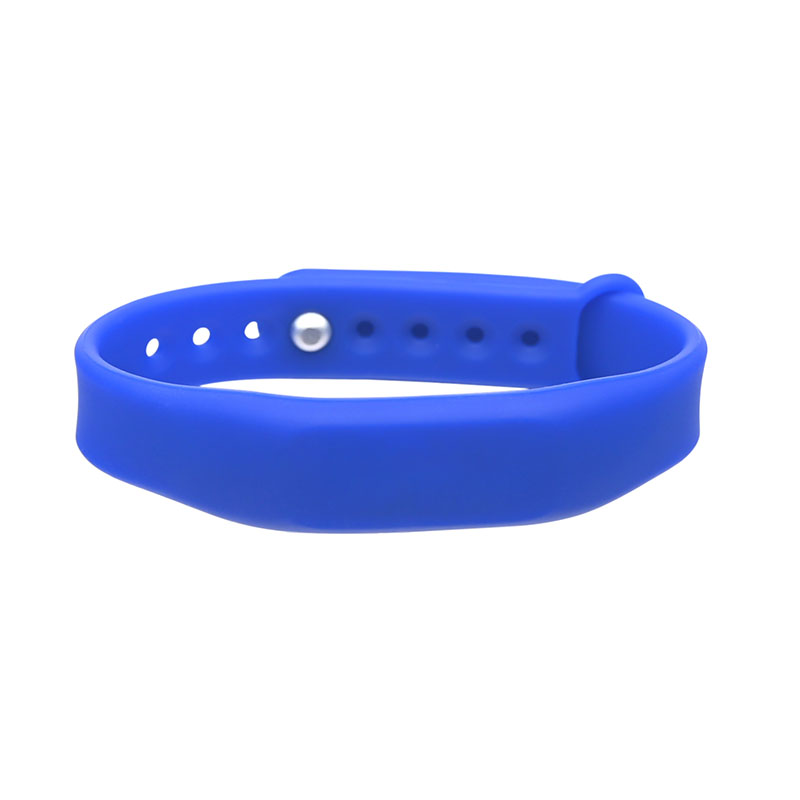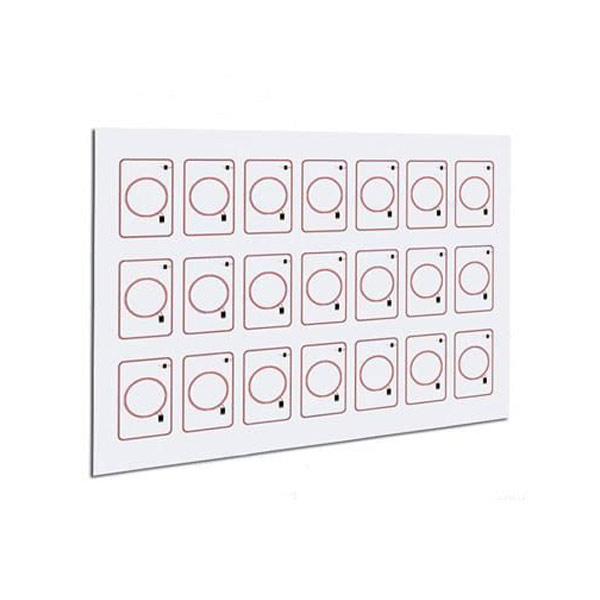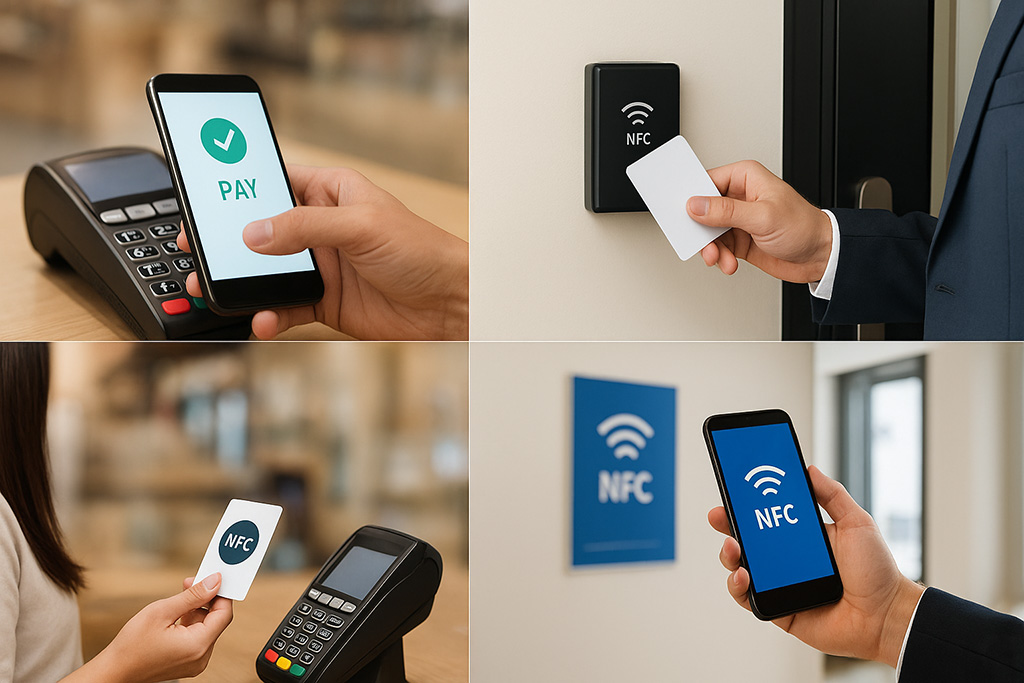
Near Field Communication (NFC) technology has grown from a niche capability into a mainstream enabler of contactless experiences. Originally developed as an extension of radio-frequency identification (RFID), NFC now powers everyday interactions such as mobile Payments, door Access, and digital membership programs. Its convenience, security protocols, and adaptability across industries have made it one of the most impactful short-range communication technologies. In this article, we explore the wide range of NFC application scenarios, covering Payments, Access Control, membership loyalty programs, marketing, and its future potential.
1. Mobile Payments and Digital Wallets
One of the most widespread applications of NFC is in mobile Payment systems and digital wallets. NFC enables contactless communication between smartphones, smartwatches, or NFC cards and point-of-sale (POS) terminals.
Mobile Payment Ecosystem
When a user taps their phone or NFC card on a compatible terminal, the device transmits encrypted transaction data through NFC’s secure channel. This forms the basis of platforms like Apple Pay, Google Wallet, and regional services such as LinkAja NFC stickers in Southeast Asia. These stickers effectively turn non-NFC-enabled phones into Payment-capable devices, thereby expanding Accessibility.
Public Transportation Integration
Beyond retail transactions, NFC powers transit Payments. Commuters can bind their transit cards to mobile wallets or use NFC-enabled phones directly at subway gates or bus validators. This eliminates the need to carry multiple cards and enables easy top-ups through mobile apps.
Electronic Tickets and Event Access
NFC is increasingly applied to e-tickets for concerts, flights, and conferences. Unlike QR codes that require scanning, NFC provides a seamless tap-to-verify experience. Airlines, for example, are experimenting with NFC boarding passes to streamline passenger flow at gates.
In sum, NFC Payment solutions combine convenience with strong security, making them a trusted standard for both consumers and businesses.
2. Access Control and Identity Authentication
Another core area where NFC shines is Access Control. Physical and digital spaces require secure authentication, and NFC provides a balance between usability and security.
Enterprise and Corporate Access
Many companies now issue hard badges embedded with NFC chips. Employees can enter buildings, log into workstations, and even purchase meals at the cafeteria with a single credential. For IT managers, NFC-enabled Access Control systems offer centralized administration and audit trails, ensuring both security compliance and convenience.
Hotels and Hospitality
Hotels increasingly adopt NFC-based room key cards. Guests can check in through a mobile app and receive a digital key, which allows them to unlock their room by tapping their smartphone or a hotel-issued NFC card. This not only improves guest experience but also reduces operational costs associated with lost keys.
Campus and University Cards
Educational institutions deploy NFC campus cards that serve as all-in-one solutions: library Access, cafeteria Payments, dormitory entry, and student identity verification. NFC readers are affordable and widely available from specialized vendors, making deployment feasible even for mid-sized schools.
From enterprises to hospitality, NFC-driven Access Control offers flexibility and a significant security upgrade compared to traditional magnetic stripe or mechanical keys.
3. Membership Cards and Loyalty Programs
Retailers and service providers increasingly leverage NFC for customer engagement and loyalty programs.
Digital Membership Cards
Instead of carrying plastic cards, customers can store their loyalty membership on smartphones or NFC stickers. With a simple tap, points are credited, and discounts are applied at checkout. NFC ensures faster processing than barcode-based systems and minimizes errors.
Reward Redemption and Coupons
Brands can distribute NFC-enabled coupons that activate directly when tapped against an in-store reader. This enables frictionless reward redemption. Moreover, loyalty points and discount vouchers can be stored in the same NFC ecosystem.
Customer Data Collection
Using NFC tag tools, businesses can analyze customer interactions in real-time. For instance, tapping an NFC-enabled loyalty card at a kiosk may provide insights into purchase history, which can be used to tailor promotions.
Overall, NFC-based membership systems enhance user experience and provide businesses with valuable data for personalization.
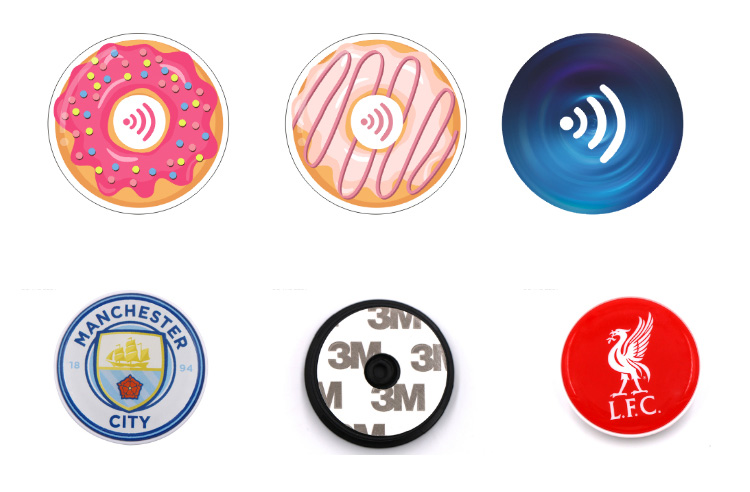
4. Creative and Interactive Marketing
NFC extends beyond transactional use into creative marketing and interactive engagement. By embedding NFC into physical media, brands can build immersive experiences.
NFC Posters and Billboards
Printable NFC tags allow advertisers to transform static posters into interactive gateways. Consumers can tap their smartphones on a movie poster to watch trailers, buy tickets, or receive promotional content instantly.
Exhibitions and Events
Museums and exhibitions use NFC-enabled displays where visitors can tap their devices to Access extra content, audio guides, or AR features. This approach bridges the physical and digital worlds, enriching visitor experiences.
Digital Business Cards
With blank NFC tags, professionals can program virtual business cards. When tapped, the card automatically shares contact details, LinkedIn profiles, or company websites. Unlike QR codes, NFC cards do not require camera alignment, offering a smoother exchange.
Interactive marketing with NFC enables brands to capture attention while providing measurable engagement metrics.
5. Future Trends in NFC Development
As technology evolves, NFC continues to expand its influence. Several trends indicate where NFC is headed:
Wearable Devices
NFC chips are now embedded in smartwatches, fitness bands, and even rings, enabling contactless Payment and secure authentication without needing a smartphone.
Internet of Things (IoT)
In IoT ecosystems, NFC serves as a bridge for device pairing and secure onboarding. For example, smart home devices can be initialized simply by tapping a smartphone to an NFC-enabled hub.
Cloud Security Enhancements
With growing cybersecurity concerns, NFC standards are incorporating stronger encryption and cloud-based credential management. This ensures that sensitive data, such as biometric information or Payment tokens, remains secure while still being easily Accessible through tap interactions.
The trajectory suggests NFC will become even more deeply embedded in daily life, integrated with AI-driven personalization and broader IoT applications.
6. Frequently Asked Questions (FAQ)
Can NFC stickers be used to automatically launch apps?
Yes. NFC stickers can be programmed to trigger specific actions on a smartphone, including launching apps. For instance, a user can place an NFC sticker in their car that automatically opens a navigation app when tapped. Using NFC tag tools, individuals and businesses can configure stickers to execute commands such as opening a website, connecting to Wi-Fi, or setting an alarm. However, functionality may vary depending on the operating system and device settings.
Is NFC secure enough for sensitive transactions?
NFC transactions, especially in financial contexts, rely on encryption and tokenization to ensure security. Payment data is not transmitted directly but is replaced by dynamic tokens, which significantly reduce the risk of fraud.
Do all smartphones support NFC?
Not all smartphones come with built-in NFC chips. While most flagship and mid-range devices support NFC, some entry-level models may exclude it. Users should verify specifications before purchasing.
Can NFC tags be reused or rewritten?
Yes. Many NFC tags are rewritable, allowing users to change their function multiple times. This makes them ideal for experimentation, creative marketing, or changing use cases over time.
Conclusion
NFC has proven itself as more than a convenience—it is a core enabler of modern digital interactions. From mobile Payments and secure Access Control to loyalty programs and interactive marketing, NFC is shaping how individuals and organizations connect in both physical and digital spaces. Looking ahead, NFC’s integration with wearables, IoT systems, and cloud-based security will unlock even more possibilities. For businesses, embracing NFC means staying aligned with consumer expectations of speed, security, and seamless experiences.
By covering Payments, Access, membership, creativity, and future trends, NFC demonstrates its versatility and staying power as a cornerstone of the contactless era.


